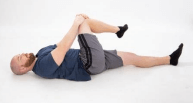Pain in your hip can be referred from a problem with your back. It can be difficult to determine the true source. It is possible that you are having both back and hip pain at the same time, but it is not that common. We will try to provide some guidance.
Signs Your Hip Pain may be from Your Back.
Pain is felt in the low back, or from the low back into the buttock area. Pain spreads from the lower back all the way to the foot or ankle.

Does your pain worsen with sitting or bending?
Does your pain improve with standing or walking?
Do you have pain in your lower back on the same side as your hip pain?
Coughing or sneezing reproduces or increases your hip or back pain.
Do you have areas of numbness or tingling on the same side as your hip pain?
You have both hip and back pain on the side of pain at the same time.
Signs Your Hip Pain May Be from Your Hip
You have pain only in the groin, or side of the hip. The pain may spread down the side of the thigh to the knee, or down the front of the thigh to the knee, but not beyond.
Squatting tends to aggravate your hip.

Your hip pain is worse with standing, walking, and activity. The pain is relieved with rest. You walk with a limp. Your hip feels stiff.
Tests You Can Do
Sit in a chair. Note your pain location and intensity. Now slump down. Is your pain worse? Unchanged? Now grab the seat of the chair with both hands and while slumping, pull up on it. Is the pain worse? Unchanged. (Pain will tend to change if the source is from your back).

Hip Internal Rotation: Sit on a higher chair or surface with your legs dangling. With your knees together rotate your ankles out to the side as far as your legs will allow. Compare the motion of each. Motion tends to be limited on an arthritic hip.

Flex your hip in the seated or standing position. You may feel increased pain on the side of your hip with hip arthritis.

Lie on your back. Flex your affected hip (leg) until your thigh is vertical and the knee is at a right angle. Grab your knee with both hands and pull the leg directly down (like you are trying to drive your upper thigh into your pelvis. (see photo A). While pulling the leg down direct your hands to the opposite leg (you are adducting the hip). (see photo b) An arthritic hip may experience pain in the groin or outside the hip.

In a standing position hold on to a counter and extend the affected hip directly back. An arthritic hip may feel pain.

Check out the full Hip Pain Relief Program series of videos along with downloadable guide sheets for each video on our website here: https://www.bobandbrad.com/health-programs/hip-pain-relief-program












Comments